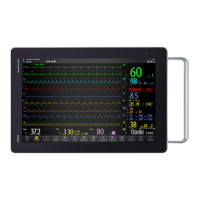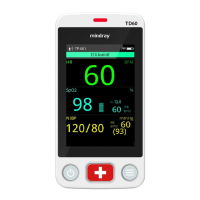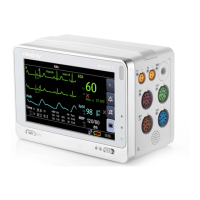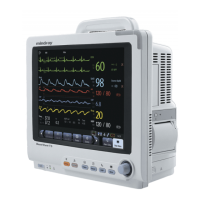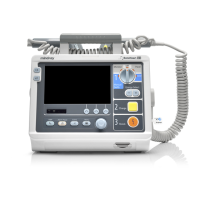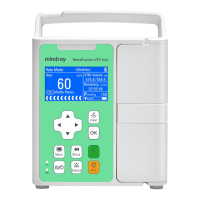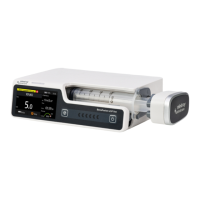10 - 2 BeneVision N1 Patient Monitor Operator’s Manual
• Change the application site or replace the sensor and/or patient cable when a persistent SpO2 Low
Signal Quality message is displayed on the equipment. These messages may indicate that patient
monitoring time is exhausted on the patient cable or sensor.
• Replace the cable or sensor when a “SpO2 Sensor Off”, “SpO2 No Sensor”, or “SpO2 Low Signal
Quality” message is consistently displayed while monitoring consecutive patients after completing
troubleshooting steps listed in this manual.
• Variation in measurements may be profound and may be affected by sampling technique as well as
the patient's physiological conditions. Any results exhibiting inconsistency with the patient’s clinical
status should be repeated and/or supplemented with additional test data. Blood samples should be
analyzed by laboratory instruments prior to clinical decision making to completely understand the
patient’s condition.
• Use only SpO
2
sensors specified in this manual. Follow the SpO
2
sensor’s instructions for use and
adhere to all warnings and cautions.
• Additional information specific to the Masimo sensors compatible with the equipment, including
information about parameter/measurement performance during motion and low perfusion, may be
found in the sensor's directions for use (DFU).
• Masimo cables and sensors are provided with X-Cal™ technology to minimize the risk of inaccurate
readings and unanticipated loss of patient monitoring. Refer to the Cable or Sensor DFU for the
specified duration of the patient monitoring time.
10.3 SpO
2
Measurement Limitations
The following factors may influence the accuracy of SpO
2
measurement:
■ Patient physiological characteristics:
◆ Cardiac arrest
◆ Hypotension
◆ Darkly pigmented skin
◆ Shock
◆ Severe vasoconstriction
◆ Hypothermia
◆ Severe anemia
◆ Ventricular septal defects (VSDs)
◆ Venous pulsations
◆ Poor perfusion
◆ Dysfunctional hemoglobin, such as carboxyhemoglobin (COHb) and methemoglobin (MetHb)
◆ Elevated levels of bilirubin
◆ Vasospastic disease, such as Raynaud’s, and peripheral vascular disease
◆ Hemoglobinopathies and synthesis disorders such as thalassemias, Hb s, Hb c, sickle cell, etc.
◆ Hypocapnic or hypercapnic conditions
◆ Birthmark(s), tattoos, skin discolorations, moisture on skin, deformed or abnormal fingers. etc.
■ Interfering substances:
◆ Intravascular dyes (such as indocyanine green, methylene blue, indigo carmine, etc.)
◆ Dyes in the measure site, such as nail polish
■ Environmental conditions:
◆ Excessive ambient light
◆ Electrosurgery equipment

